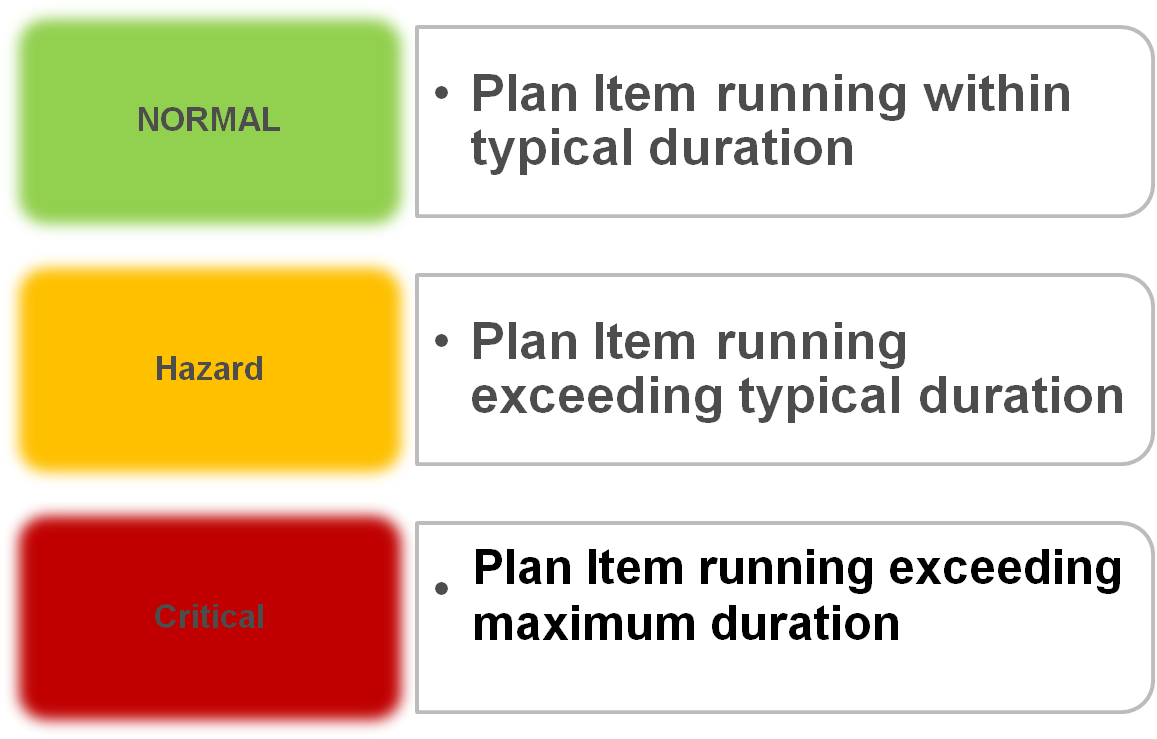Jeopardy Management
The jeopardy management process involve three main activities:
- Monitoring the Quality of Service
- Reporting the Quality of Service
- Predicting the Quality of Service
The objectives of Jeopardy Management are as follows:
- Continuous collection of performance data and status information of all execution plan
- Detect SLA violation
- Predict Jeopardy Conditions for execution plan
- Perform consequential actions
The Jeopardy Management System enables you to manage the risk associated with plan tasks falling behind schedule, and to prevent them from jeopardizing the timely fulfillment of an order. The Jeopardy Management System is a key component of Order Management. Jeopardy management is the process of monitoring execution of a set of tasks in a plan to fulfill a customer order. In this application, execution plans are generated by decomposing orders based on the product model. Plans are orchestrated based on a schedule, and when a plan goes or predicted to go outside the expected design of the schedule then the system notifies the stakeholders as early as possible to take the corrective steps.
A plan is composed of a series of plan items. Each plan item has at least two milestones:
Plan items might also have intermediate milestones that represent points of interest during execution of that plan item. Service-level agreement of service provider that executes plan items are specified through process component model or Plan fragment model, which stipulate among other things - the provided Services performance. SLAs have a typical duration and a maximum allowed duration to fulfill a plan item.
To manage the risk associated with plan tasks falling behind schedule, the jeopardy manager performs the following risk-management tasks:
- Managing Critical Paths: Jeopardy management computes and keeps an account of critical paths through an execution plan. Two of these critical paths correspond to the typical and maximum durations of process components. The third type of critical path is based on the actual duration to date, once the execution plan has started processing. The critical paths are used to predict the completion date and time of the execution plan. By viewing the critical paths in the UI GANTT Chart, you can determine whether your execution plan is progressing normally or if it is in danger of being in jeopardy. The Order Management Server UI highlights each plan item as per the following legend scheme:
- Monitoring jeopardy conditions at each of the following levels:
a. Plan Task
b. Execution Plan
- Perform consequential actions at each of the following levels:
a. Plan Task
b. Execution Plan
c. Milestone
The Order Management UI shows dashboard for jeopardy management containing the following elements along with Orders Summary, Amended Orders, Backlog Orders, Orders in Execution:

